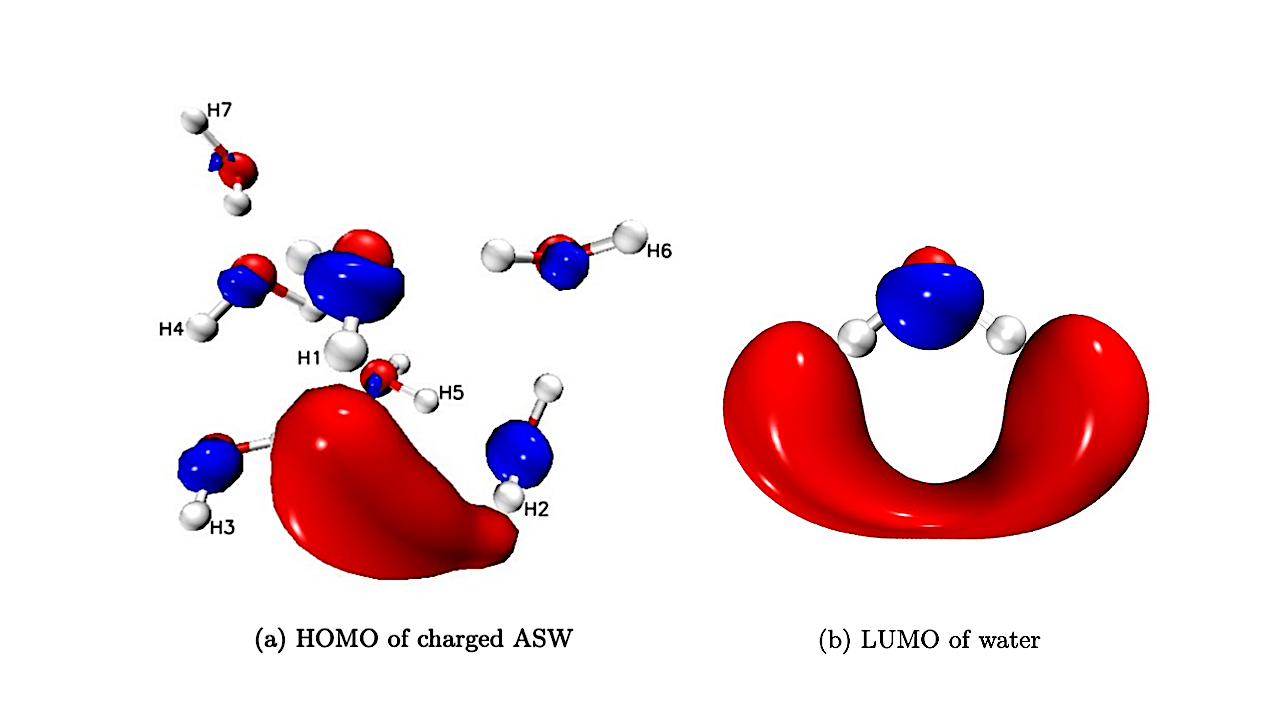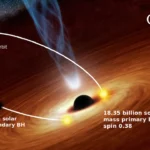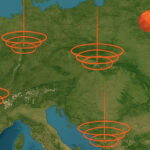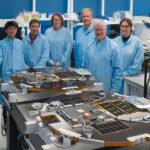Now Reading: Binding Energies Of Small Interstellar Molecules On Neutral And Charged Amorphous Solid Water Surfaces
-
01
Binding Energies Of Small Interstellar Molecules On Neutral And Charged Amorphous Solid Water Surfaces
Binding Energies Of Small Interstellar Molecules On Neutral And Charged Amorphous Solid Water Surfaces


The HOMO of the charged ASW cluster (a), only showing the closest interacting water molecules for clarity. (b) Shows the LUMO of a neutral water molecule. — astro-ph.GA
The interstellar medium (ISM) is all but empty. To date, more than 300 molecules have already been discovered. Because of the extremely low temperature, the gas-phase chemistry is dominated by barrierless exothermic reactions of radicals and ions.
However, several abundant molecules and organic molecules cannot be produced efficiently by gas-phase reactions. To explain the existence of such molecules in the ISM, gas-surface interactions between small molecules and dust particles covered with amorphous solid water (ASW) mantles must be considered.

Schematic representation of dust grains in the ISM. — astro-ph.GA
In general, surface processes such as adsorption, diffusion, desorption, and chemical reactions can be linked to the binding energy of molecules to the surface. Hence, a lot of studies have been performed to identify the binding energies of interstellar molecules on ASW surfaces.
Cosmic radiation and free electrons may induce a negative charge on the dust particles, and the binding energies may be affected by this charge. In this study, we calculate the binding energies of CO, CH4, and NH3, on neutral and charged ASW surfaces using DFT calculations. Our results indicate that CO can interact with the surface charge, increasing its binding energy. In contrast, the binding energy of CH4 remains unchanged in the presence of surface charge, and that of NH3 typically decreases.
Tobe Vorsselmans, Erik C. Neyts
Comments: This is the Accepted Manuscript version of an article accepted for publication in The Astrophysical Journal. IOP Publishing Ltd is not responsible for any errors or omissions in this version of the manuscript or any version derived from it. This Accepted Manuscript is published under a CC BY licence. The Version of Record is available online at DOI: https://doi.org/10.3847/1538-4357/add145
Subjects: Astrophysics of Galaxies (astro-ph.GA)
Cite as: arXiv:2506.01431 [astro-ph.GA] (or arXiv:2506.01431v1 [astro-ph.GA] for this version)
https://doi.org/10.48550/arXiv.2506.01431
Focus to learn more
Related DOI:
https://doi.org/10.3847/1538-4357/add145
Focus to learn more
Submission history
From: Tobe Vorsselmans
[v1] Mon, 2 Jun 2025 08:41:48 UTC (1,638 KB)
https://arxiv.org/abs/2506.01431
Astrobiology, Astrochemistry,
Stay Informed With the Latest & Most Important News
Previous Post
Next Post
-
 01From Polymerization-Enabled Folding and Assembly to Chemical Evolution: Key Processes for Emergence of Functional Polymers in the Origin of Life
01From Polymerization-Enabled Folding and Assembly to Chemical Evolution: Key Processes for Emergence of Functional Polymers in the Origin of Life -
 02Panasonic Leica Summilux DG 15mm f/1.7 ASPH review
02Panasonic Leica Summilux DG 15mm f/1.7 ASPH review -
 03How New NASA, India Earth Satellite NISAR Will See Earth
03How New NASA, India Earth Satellite NISAR Will See Earth -
 04And Thus Begins A New Year For Life On Earth
04And Thus Begins A New Year For Life On Earth -
 05Astronomy Activation Ambassadors: A New Era
05Astronomy Activation Ambassadors: A New Era -
06SpaceX launch surge helps set new global launch record in 2024
-
 07Two Black Holes Observed Circling Each Other for the First Time
07Two Black Holes Observed Circling Each Other for the First Time



















